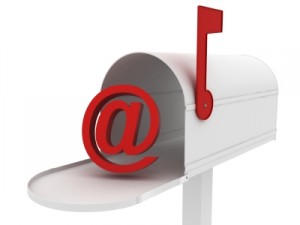 The sad truth of the matter is that many people will come to your store or website and not buy a thing or hire your services. But that doesn’t mean they won’t in the future. As long as they don’t forget about you. Which brings us to the question, how do you keep yourself in front of customers who aren’t ready to buy?
The sad truth of the matter is that many people will come to your store or website and not buy a thing or hire your services. But that doesn’t mean they won’t in the future. As long as they don’t forget about you. Which brings us to the question, how do you keep yourself in front of customers who aren’t ready to buy?
E-Newsletters! They are a great way to stay fresh in the mind of your audience. Don’t forget, when your potential customers wake up, the first thing they do is check their email, even before logging onto Facebook or Twitter. But in order for your newsletter to actually be opened and read, they need to be reader-centric and arrive on a semi-regular to regular basis. Using your list of customers is a great way to keep those who have already shown an interest in your store or business to keep coming back for more.
Up to this point, you’ve hopefully been building a mailing list. It’s time to start encouraging even more people to sign up. Because the more people you can send out the newsletter to, the better. A great way to persuade your customers to give you their email address is to promise to send special offers straight to their inbox. Or else you can offer to send some really interesting information, if you’re in the business of ideas rather than products. Once your mailing list is built up it’s time to start brainstorming what your newsletters are going to offer.
A newsletter should do two things. The first is to offer an advantage to your customers. The second is to get your customers to respond to a call to action.
If you’re having trouble coming up with newsletter content, a great way to generate some is to re-purpose a blog that you wrote. By doing this you can send out a newsletter and remind your customers that you have a blog they should be following too.
Newsletters should be delivered into your customer’s inboxes but they can also be posted on your blog, on your Facebook page, tweeted, etc. Remember, social media is content based marketing, the more content you put out there, the better.
And if you decide you want to start doing a regular newsletter, but don’t have the time to produce the content, contact me. I will sit with you to brainstorm ideas and then have them written up and waiting for when you decide to send them. Use all that customer information you have. Generate as much traffic to your business as possible and turn your email list into sales.

August 9, 2010
Great post, I’ve actually been thinking of doing a newsletter, but wasn’t sure about it. I’ve been thinking of going with constant contact too. How do you keep track of your newsletter subscribers, within constant contact, or do you have a separate database?
August 10, 2010
Hi Scott,
Most people who use Constant Contact keep their list of subscribers in an excel file. You can import the email addresses into Constant Contact for your first newsletter. After the newsletter goes out you can export the files back into excel and make any changes, such as additions and subtractions, and then re-import the excel file over the old one. Constant Contact also keeps track of your un-subscribers for you, so they will let you know who you should put on your do-not-email list, and will also take those emails off for when you export the list from CC into excel. It can be a bit confusing, but the overall answer is you would keep your list in excel. I hope this helps. Let me know if you need further clarification.
Rebecca
August 9, 2010
Rebecca,
do you favor the use of one’s personal email from which to send newsletters, or do you think that third-party services such as Constant Contact are better? What about a hybrid approach?
Also, what about the frequency of newsletters? A lot of businesses for whose newsletters I have signed-up do monthly ones with coupons or specials, etc.
August 9, 2010
Hi Greg,
Thanks for your comment! I think using a constant contact is a great way to publish your newsletters. I would definitely advocate that approach. It lends itself a bit more credibility in my eyes.
I think depending on your business and what you want to get out of the newsletters a weekly, bi-monthly, or monthly approach is best. It’s good to have a set schedule to follow so you keep up with them.
Rebecca